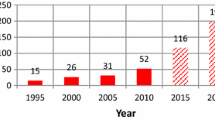Abstract
Seismologists and earthquake engineers have sought to understand and predict earthquakes and to develop better building designs to withstand them for well over a century. In the United States, the 1906 San Francisco earthquake provided the first real impetus for establishing building design codes and safety standards. Subsequent major California earthquakes in Santa Barbara (1925), Long Beach (1933), San Fernando (1971), Loma Prieta (1989), and Northridge (1994) each led to additional seismological understanding and engineering response in the form of enhanced building design codes. Nonetheless, the process to incorporate good seismic design and mitigation efforts has been slow, and by no means failsafe, especially in the Eastern U.S. where much of the building stock predates more recent design codes, and hence where a major earthquake could collapse large numbers of buildings. Even in the absence of catastrophe, it is still important to guard against a false sense of security.
Similar content being viewed by others
References
Benfer N.A., et al. (eds), 1973: San Fernando, California Earthquake of February 9, 1971. USGPO and Dept. of Commerce, Washington, D.C.
Berke P.R. and Beatly T., 1992: A National Assessment of Local Earthquake Mitigation: Implications for Planning and Public Policy. Earthquake Spectra 8(1): 1–15.
Berlin G.L., 1980: Earthquakes and the Urban Environment. 3 vols. CRC Press, Boca Raton, Fla.
Chang K., 2000: Agency Projects Economic Risks of Earthquakes across U.S. The New York Times September 9.
Clough G.W., Martin J.R., II, and Chameay J.L., 1994: The Geotechnical Aspects. In: National Research Council, 29–63.
Cutcliffe S.H., 1996: On Shaky Ground: A History of Earthquake Resistant Building Design Codes and Safety Standards in the United States in the Twentieth Century. Bulletin of Science, Technology & Society 16(5–6): 311–327.
Dewell H.D., 1939: Progress of Earthquake-Resistant Design. Civil Engineering 9: 601–604.
Dewell H.D. and Willis B., 1925: Earthquake Damage to Buildings. Bulletin of the Seismological Society of America 15: 282–301.
Earthquake Engineering, 1995: Fear of Trembling. The Economist 335: Pull out survey, 56ff.
EERI, Ad Hoc Committee on Seismic Performance, 1994: Expected Seismic Performance of Buildings. Earthquake Engineering Research Institute, Oakland, Calif.
Fratessa P.F., 1994: Buildings. In: National Research Council, 69–99.
Freeman J.R., 1932: Earthquake Damage and Earthquake Insurance. McGraw-Hill, New York.
Fritsch J., 1994: Quake Revealed Flaws in ‘safe’ Structures' Design. The New York Times. January 20.
Green N.B., 1987: Earthquake Resistant Building Design and Construction, 3rd Ed. Elsevier, New York.
Hall J.F. (ed.), 1995: Northridge Earthquake Reconnaissance Report, Vol. 1. Earthquake Spectra 11, Suppl. C.
Hall J.F., et al., 1995: Wooden Buildings. In: Holmes and Somers (eds), 1996, 125–176.
Holmes W.T. and Somers P. (eds), 1996: Northridge Earthquake Reconnaissance Report, Vol. 2. Earthquake Spectra 11, Suppl. C.
Housner G.W., 1990: Historical Review of Earthquake Engineering. In: Selected Earthquake Engineering Papers of George W. Housner. pp. 764–777. American Society of Civil Engineers, New York.
Krawinkler H., et al., 1996: Steel Buildings. In: Holmes and Somers (eds), 1996, 25–47.
Meehan J.F., 1973: Public School Buildings. In: Benfer et al. (eds), Vol. 1, Pt. B, 667–670.
Moran D.F. and Bockemohle L.W., 1973: History and Philosophy of California Earthquake Codes and Elements of Lateral Force Design. In: Benfer et al. (eds), 1973, Vol. 1, Pt. A, 23–36.
Muto K., 1971: Earthquake-Proof Design Gives Rise to First Japanese Skyscrapers. Civil Engineering 41: 49–52.
National Research Council, 1994: Practical Lessons from the Loma Prieta Earthquake: Report from a Symposium Sponsored by the Geotechnical Board and the Board of Natural Disasters of the national Research Council. National Academy Press, Washington, D.C.
Olshansky R.B., 1994: Earthquake Hazard Mitigation in the Central United States: A Progress Report. In: Fifth U.S. National Conference on Earthquake Engineering, July 10–14, 1994, Chicago, Illinois, pp. 985–994. Earthquake Engineering Research Institute, Oakland, Calif.
Popov E.P., 1988: Seismic Design of Tall Steel Buildings. In: Beedle L.S. (ed.), Second Century of the Skyscraper, pp. 815–835. Van Nostrand, New York.
Report of Engineering Committee, 1925: Report of Engineering Committee on the Santa Barbara Earthquake, Abstract. Bulletin of the Seismological Society of America 15: 302–303.
Showalter P. Sands, 1994: A Guide for Responding to Unconventional Earthquake Predictions. In: Fifth U.S. National Conference on Earthquake Engineering, July 10-14, 1994, Chicago, Illinois, pp. 1035–1044. Earthquake Engineering Research Institute, Oakland, Calif.
Steinbrugge K.V., 1970: Earthquake Damage and Structural Performance in the United States. In: Wiegel R.L. (ed.), Earthquake Engineering, pp. 174–181. Prentice-Hall, Englewood Cliffs, N.J.
Tobin L.T., 1994: Legacy of the Loma Prieta Earthquake: Challenges to Other Communities. In: National Research Council, 19–28.
Williams J.C., 1995: Earthquake Engineering: Designing Unseen Technology against Invisible Forces. ICON: Journal of the International Committee for the History of Technology 1: 172–194.
Author information
Authors and Affiliations
Rights and permissions
About this article
Cite this article
Cutcliffe, S.H. Earthquake resistant building design codes and safety standards: The California experience. GeoJournal 51, 259–262 (2000). https://doi.org/10.1023/A:1017566714380
Issue Date:
DOI: https://doi.org/10.1023/A:1017566714380




